Skoda Fabia VS Nissan Leaf – Specs, Efficiency & Price Comparison
Which model is the better choice – the Skoda Fabia or the Nissan Leaf? We compare performance (150 HP vs 217 HP), boot capacity (380 L vs 394 L), efficiency (4.90 L vs 16.70 kWh), and of course, the price (16900 £ vs 30800 £).
Find out now which car fits your needs better!
The Skoda Fabia (Hatchback) is powered by a Petrol engine and comes with a Manuel or Automatic transmission. In comparison, the Nissan Leaf (Hatchback) features a Electric engine and a Automatic gearbox.
When it comes to boot capacity, the Skoda Fabia offers 380 L, while the Nissan Leaf provides 394 L – depending on what matters most to you. If you’re looking for more power, you’ll need to decide whether the 150 HP of the Skoda Fabia or the 217 HP of the Nissan Leaf suits your needs better.
There are also differences in efficiency: 4.90 L vs 16.70 kWh. In terms of price, the Skoda Fabia starts at 16900 £, while the Nissan Leaf is available from 30800 £.
Compare all the key specs now and find out which model fits your lifestyle best!
Skoda Fabia
The Skoda Fabia presents itself as a practical and stylish hatchback, perfect for urban driving and beyond. Its interior is designed with comfort and functionality in mind, offering ample space and intuitive controls. With a focus on efficiency, the Fabia provides a smooth driving experience, complemented by its crisp and modern exterior design.
details @ Skoda Presse Deutschland
@ Skoda Presse Deutschland
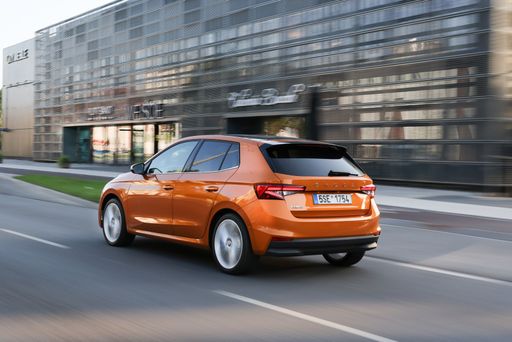 @ Skoda Presse Deutschland
@ Skoda Presse Deutschland
 @ Skoda Presse Deutschland
@ Skoda Presse Deutschland
 @ Skoda Presse Deutschland
@ Skoda Presse Deutschland
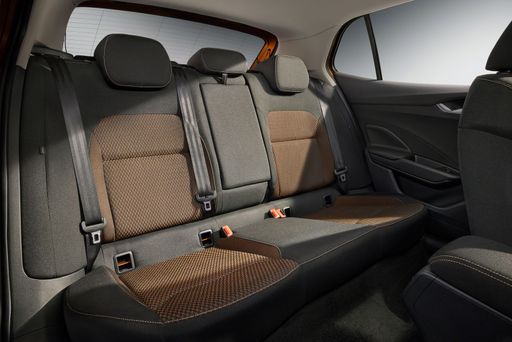 @ Skoda Presse Deutschland
@ Skoda Presse Deutschland
Nissan Leaf
The Nissan Leaf stands out as a pioneering model in the realm of electric vehicles, known for its impressive blend of practicality and eco-friendliness. It offers a smooth and quiet driving experience, making it an ideal choice for city commuting and longer journeys alike. The interior design is both comfortable and intuitive, providing drivers with a sense of modernity and ease of use.
details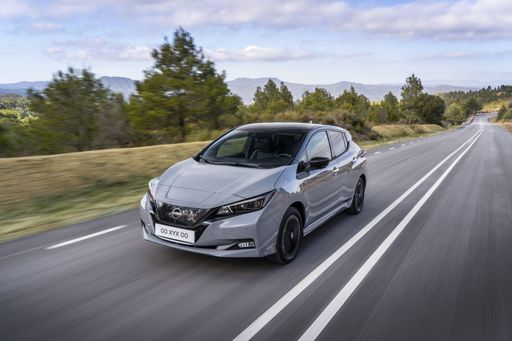 @ germany.nissannews.com
@ germany.nissannews.com
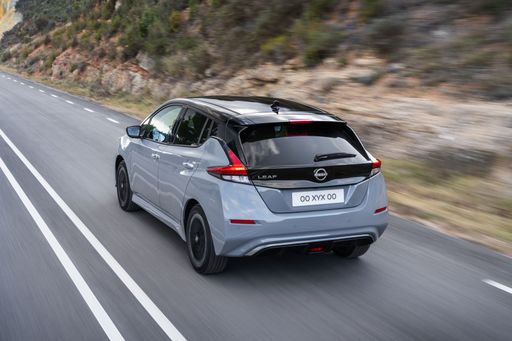 @ germany.nissannews.com
@ germany.nissannews.com
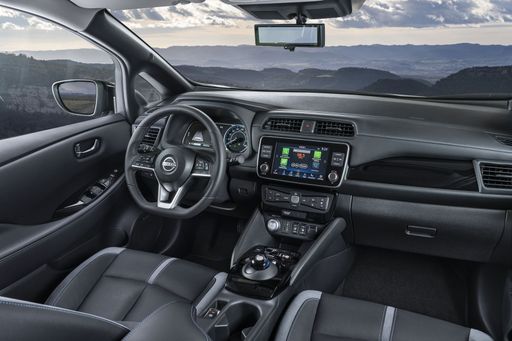 @ germany.nissannews.com
@ germany.nissannews.com
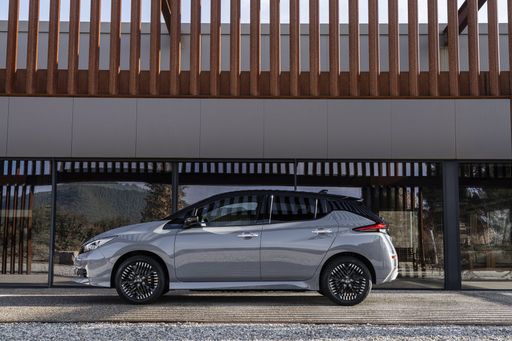 @ germany.nissannews.com
@ germany.nissannews.com

|

|
|
|
|
Costs and Consumption |
|
|---|---|
|
Price
16900 - 26000 £
|
Price
30800 - 37200 £
|
|
Consumption L/100km
4.9 - 5.3 L
|
Consumption L/100km
-
|
|
Consumption kWh/100km
-
|
Consumption kWh/100km
16.7 - 17.8 kWh
|
|
Electric Range
-
|
Electric Range
270 - 385 km
|
|
Battery Capacity
-
|
Battery Capacity
39 - 59 kWh
|
|
co2
112 - 119 g/km
|
co2
0 g/km
|
|
Fuel tank capacity
40 L
|
Fuel tank capacity
-
|
Dimensions and Body |
|
|---|---|
|
Body Type
Hatchback
|
Body Type
Hatchback
|
|
Seats
5
|
Seats
5
|
|
Doors
5
|
Doors
5
|
|
Curb weight
1133 - 1238 kg
|
Curb weight
1580 - 1756 kg
|
|
Trunk capacity
380 L
|
Trunk capacity
385 - 394 L
|
|
Length
4108 mm
|
Length
4490 mm
|
|
Width
1780 mm
|
Width
1788 mm
|
|
Height
1459 mm
|
Height
1540 - 1545 mm
|
|
Payload
442 - 455 kg
|
Payload
384 - 415 kg
|
Engine and Performance |
|
|---|---|
|
Engine Type
Petrol
|
Engine Type
Electric
|
|
Transmission
Manuel, Automatic
|
Transmission
Automatic
|
|
Transmission Detail
Schaltgetriebe, Automat. Schaltgetriebe (Doppelkupplung)
|
Transmission Detail
Reduction Gearbox
|
|
Drive Type
Front-Wheel Drive
|
Drive Type
Front-Wheel Drive
|
|
Power HP
80 - 150 HP
|
Power HP
150 - 217 HP
|
|
Acceleration 0-100km/h
8 - 15.7 s
|
Acceleration 0-100km/h
6.9 - 7.9 s
|
|
Max Speed
175 - 222 km/h
|
Max Speed
144 - 157 km/h
|
|
Torque
93 - 250 Nm
|
Torque
320 - 340 Nm
|
|
Number of Cylinders
3 - 4
|
Number of Cylinders
-
|
|
Power kW
59 - 110 kW
|
Power kW
110 - 160 kW
|
|
Engine capacity
999 - 1498 cm3
|
Engine capacity
-
|
General |
|
|---|---|
|
Model Year
2024
|
Model Year
2019
|
|
CO2 Efficiency Class
D, C
|
CO2 Efficiency Class
A
|
|
Brand
Skoda
|
Brand
Nissan
|
Skoda Fabia
The Skoda Fabia: Precision Meets Practicality
The Skoda Fabia has long been a favourite in the compact car segment, and the 2024 version continues to uphold its reputation for delivering a perfect blend of efficiency, performance, and affordability. With a fresh design and advanced technological innovations, the Fabia is set to impress both new drivers and loyal enthusiasts alike.
Under the Bonnet: Engine Specifications
At the heart of the Skoda Fabia lies a range of efficient petrol engines tailored to meet diverse driving needs. The engine line-up includes three-cylinder and four-cylinder options, offering power outputs between 80 PS to 150 PS, corresponding to 59 kW to 110 kW. These engines strike an ideal balance between spirited performance and fuel economy, boasting consumption rates between 5 to 5.5 litres per 100 km, depending on the variant.
Transmission Options: Manual and Automatic
Drivers can choose from manual or automatic transmissions based on their preference for driving dynamics. The manual gearbox provides a traditional, engaging driving experience, while the advanced automatic dual-clutch transmission (DSG) offers seamless gear changes for a more relaxed commute.
Design and Dimensions: Compact Yet Spacious
The Fabia's exterior design remains quintessentially Skoda—sharp, elegant, and functional. The car measures 4108 mm in length, 1780 mm in width, and stands 1479 mm tall. Despite its compact footprint, the interior is surprisingly spacious, comfortably seating five and providing a commodious boot space of 380 litres.
Performance Metrics: Speed and Agility
Acceleration varies between 8 to 15.1 seconds for a 0-100 km/h sprint, with a maximum speed of 179 to 225 km/h, making it a versatile choice for urban and highway driving. Furthermore, the front-wheel-drive system ensures excellent traction and handling in various road conditions.
Fuel Efficiency and Environmental Impact
Skoda continues its commitment to sustainability with the Fabia, achieving CO2 emissions between 113 to 124 g/km. These figures not only highlight the vehicle's eco-friendly credentials but also result in lower running costs for the consumer, making it an astute financial choice.
Trim Levels and Customisation
The Fabia is available in six distinct trim levels: Drive, Essence, Selection, Drive DSG, Monte Carlo, and Monte Carlo DSG. Each variant offers its own set of features and customisation options, allowing buyers to tailor the vehicle to their specific taste and lifestyle needs.
Conclusion: A Compact Car with Much to Offer
In conclusion, the Skoda Fabia stands out in the compact car segment with its remarkable balance of performance, practicality, and affordability. With prices ranging from €19,320 to €29,840, it offers great value for money, appealing to a wide range of car buyers seeking reliability and innovation in their daily drive.
Nissan Leaf
Introduction to the Nissan Leaf: A Pioneer in Electric Mobility
The Nissan Leaf has established itself as a trailblazer in the realm of electric vehicles (EVs) since its launch. As we delve into its present-day iterations, the Leaf continues to soar in popularity due to remarkable advancements in technology and sustainability. Let's explore what makes the Nissan Leaf a standout in today's automotive market.
Power and Performance: Under the Hood of the Nissan Leaf
The Nissan Leaf boasts a power output ranging from 150 to 217 PS, depending on the battery option chosen. The vehicle's electric motor, a product of cutting-edge engineering, offers instant torque ranging from 320 to 340 Nm, resulting in impressive acceleration capabilities. The 0 to 100 km/h dash is achieved in as little as 6.9 seconds, showcasing its prowess in electric performance.
Battery Technology: Efficient Energy Management
When discussing the Nissan Leaf, battery technology is at the forefront. The available battery capacities range from 39 to 59 kWh, supporting an electric range between 270 to 385 km. This flexibility allows drivers to choose a model that best fits their driving habits, providing peace of mind for longer journeys without frequent recharging.
Sustainability: The Environmental Edge
One of the primary attractions of the Nissan Leaf is its commitment to sustainability. As an all-electric vehicle, it produces zero CO2 emissions, placing it in the top tier of the CO2-efficiency class with an 'A' rating. This clean energy approach contributes significantly to reducing environmental impact and supports Nissan's drive towards a greener future.
Design and Comfort: Aesthetic Appeal and Practicality
The Nissan Leaf is not just about efficiency; it's also designed for comfort and utility. With its sleek hatchback body and dimensions of 4490 mm in length, 1788 mm in width, and a height of up to 1545 mm, it offers ample interior space. The boot capacity ranges from 385 to 394 litres, providing sufficient storage for everyday needs. The model accommodates five passengers comfortably, ensuring a pleasant ride for everyone.
Innovations and Safety: Advanced Features for Peace of Mind
Nissan equips the Leaf with an array of intelligent features that enhance safety and convenience. The available equipment lines, including N-CONNECTA, Tekna, e+ N-CONNECTA, and e+ Tekna, offer varying levels of technology integration. ProPILOT Assist, e-Pedal, and a comprehensive suite of driver-assistance technology are just a few examples that highlight Nissan's commitment to innovation in the EV market.
Conclusion: The Nissan Leaf Continues to Lead
With prices ranging from €35,900 to €43,400, the Nissan Leaf remains an attractive choice for those looking to embrace electric mobility. It perfectly balances performance, design, and sustainability, making it a compelling choice in the competitive EV landscape. The Nissan Leaf not only represents the future of driving but also reinforces why it continues to be a leader in the electric vehicle community.
The prices and data displayed are estimates based on German list prices and may vary by country. This information is not legally binding.
